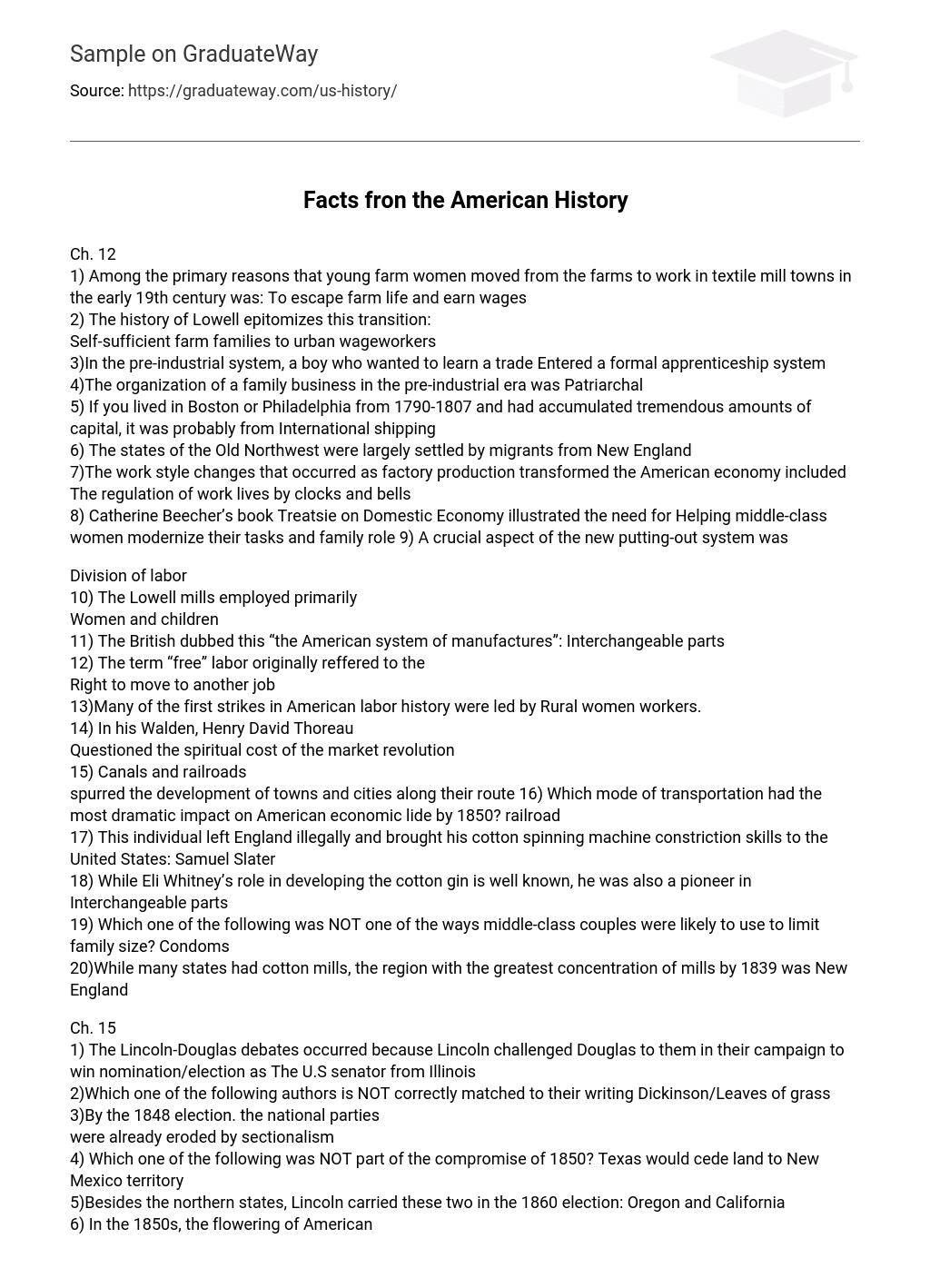- Among the primary reasons that young farm women moved from the farms to work in textile mill towns in the early 19th century was: To escape farm life and earn wages
- The history of Lowell epitomizes this transition: Self-sufficient farm families to urban wageworkers
- In the pre-industrial system, a boy who wanted to learn a trade Entered a formal apprenticeship system
- The organization of a family business in the pre-industrial era was Patriarchal
- If you lived in Boston or Philadelphia from 1790-1807 and had accumulated tremendous amounts of capital, it was probably from International shipping
- The states of the Old Northwest were largely settled by migrants from New England
- The work style changes that occurred as factory production transformed the American economy included The regulation of work lives by clocks and bells
- Catherine Beecher’s book Treatsie on Domestic Economy illustrated the need for Helping middle-class women modernize their tasks and family role
- A crucial aspect of the new putting-out system was Division of labor
- The Lowell mills employed primarily. Women and children
- The British dubbed this “the American system of manufactures”: Interchangeable parts
- The term “free” labor originally reffered to the Right to move to another job
- Many of the first strikes in American labor history were led by Rural women workers.
- In his Walden, Henry David Thoreau.
Facts fron the American History
Grammar mistakes
C (74%)
Synonyms
A (100%)
Redundant words
C (75%)
Readability
F (45%)
Cite this page
Facts fron the American History. (2016, Jul 31). Retrieved from
https://graduateway.com/us-history/





